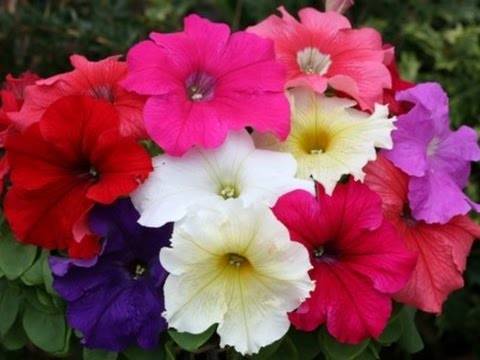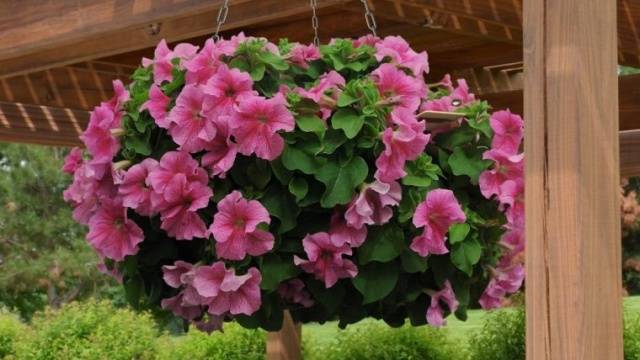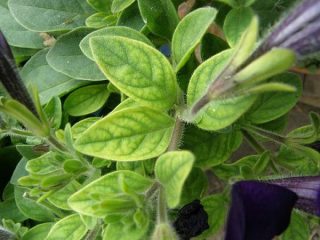Content
Among flower growers there are many hobbyists who prefer to grow different varieties of petunias. Today this can be done without problems. Every year, breeders delight with new amazing varieties of petunias. The variety of colors, shapes, and sizes of flowers allows you to create amazing “ornaments” in your flower beds. Blooming petunias look great both when planted alone and among other flowers.
The sensation of 2016 was the petunia Spherica f1.
Description
This is the latest series of petunias in which breeders have managed to combine the excellent qualities of existing premium groups.
- The plant is compact, with a large number of branches, reaching a height of up to 30 cm. During the season, petunia variety Sferika f1 grows in diameter up to 30 cm. The compactness of the bush is not lost, and no elongation of shoots is observed.
- The shoots of petunia Sferika are strong, tolerate transportation well, and do not break off during transplantation.
- The colors of the flowers are very diverse, you can choose to suit every taste. The flowers are quite large, up to 12 cm in diameter. Among the new series of petunias Sferika 100 f1 there are terry varieties. Flowering continues for a long time. The petunia bush is in bright fragrant flowers almost all summer. Just look at this photo!
Petunia Spherica is considered a universal variety, so it feels great in flower pots and can be used to create unique borders. The compact ball maintains its shape throughout the season, as in the photo below.
Growing seedlings
The thing is that petunia Spherica f1 is a hybrid. This is why experienced flower growers advise purchasing seeds in the store. A large selection of petunia seeds of the Sferika variety is offered by the Biotekhnika online store.
The flower seeds are very small, and it is difficult to work with such seed material. They go on sale in coated form; the Sferika seeds are clearly visible in the photo.
To obtain high-quality seedlings, seeds should be sown in boxes in late February - early March.
Before planting, the soil is prepared. It should be nutritious, loose, and moisture-permeable. The soil is poured with boiling water with dissolved potassium permanganate (pink).
The seeds are scattered over the surface of the cooled soil, without being sprinkled. The top of the container is covered with glass to create a greenhouse effect. Cake pans with a closing lid can be used as a nursery. Sowing as the top layer of soil dries is sprinkled with warm water.
Place the container in a warm place and maintain the temperature from +18 to +20 degrees. As a rule, the first shoots of Spherica petunia appear after 2-3 weeks.
Sferika's sprouts are weak, they need a lot of light and warmth. For successful development, seedlings need to be watered in a timely manner.
You can sow Sferika seeds not only in a container, but also grow them in a snail or in peat tablets. Many flower growers talk about such methods in their reviews.
To propagate the plant, you can use the vegetative method if the flower overwintered on the window. They select healthy shoots, root them in water, and then plant them in cups. The vegetative method allows you to preserve 100% parental qualities. The photo shows how petunia Spherica is propagated by shoots.
Dive, landing on the street
As soon as 3-4 true leaves appear, Sferika petunia seedlings are transplanted. The soil should have enough humus, acidity pH 5.5-6. In more acidic soils, Petunia Spherica slows down its development.
For seedlings, a temperature of +17 degrees is enough. The glasses are placed on a bright window, but direct sunlight should not burn the plants through the glass.
The most successful seedlings are considered to be at the age of three months. It has a powerful root system and takes root more easily. With proper care, flowering Sferika is planted in the ground.
Look at the photo and try to imagine what a ball of blooming petunias will look like in the summer!
Video about making interesting flower pots:
Rules of care
Caring for petunia Sferika is not difficult, reviews from our readers confirm this. Therefore, if a person is just starting to get into flowers, he can safely grow petunias. For beginners, we will tell you about caring for flowers.
Watering
The plant can be grown in flowerpots, on the balcony, in the ground.
Irrigation features will depend on the location:
- flowerpots with Sferika petunia need to be watered twice a day;
- in the flowerbed once every two days is enough;
- on the balcony, depending on where it faces. If on the south side, then every day. From the north - as the topsoil dries out.
You can water it with rainwater or from a pump. The water should be warm. In case of heavy rain, the flowerpots should be removed under a canopy.
Lighting
Petunias are light-loving plants. With a lack of light, the leaves become dull and abundant flowering is not observed. In addition, the shoots stretch out and the sphere loses its spherical shape.
Temperature
The plant is hardy, feels good even at +7 degrees. You should know that the more real leaves a petunia has, the more vitality it has. Can be planted in flower beds and flowerpots. The plant blooms for a long time; often, even after slight frosts, flowering in flower beds does not stop.
How to feed
The flower needs feeding, especially if it is planted in a flower pot. Thanks to fertilizer, petunias gain vitality and bloom profusely and for a long time.
Sferika is fed for the first time 7 days after planting. Then every week. As feeding petunia You can use organic fertilizers, mullein.
Feeding continues until the end of summer. Then the bush will be strong, with a lot of flowers.



















The white spherical flower size corresponds to the declared size, it is large, but for some reason the flower does not have turgor, the pink one has turgor and the red one with a white center also has turgor, but the white one is like a wet rag. Maybe someone will answer!
Good afternoon, dear Tamara!
The state of turgor directly depends on the soil. There may be several reasons for the loss of turgor.
The first is that Sferika is very demanding on the composition of the soil. With a lack of mineral nutrients, the elasticity of flowers is immediately lost.
The second reason is that petunias are critical to excess and lack of moisture. The slightest underfilling or overfilling immediately affects the appearance of the flowers.
And further. Loss of turgor may indicate that the root system of petunias is beginning to rot.
We advise you to transplant the flower to another place. When replanting, pay attention to the roots. If signs of root system disease are noticeable, take immediate action.